3D printer by olivier can herpt for undamaged porcelain vases
Olivier van Herpt has cracked the code in generating and forming large-scale porcelain without cracking or collapsing with his recent 3D printer. He has already 3D printed porcelain vases and functional ceramics in the past, but they were all small-scale. This time, his 3D printer with a thin nozzle can create delicate and lightweight swerving vases and objects out of true white porcelain, also known as hard-paste porcelain.
They are taller, more than a meter in height, and their forms don’t change when they come out of the kiln after firing. He started building his 3D printer and experimenting with his technique in 2020, and only in 2024 has he become certain that he has found a stable formula.
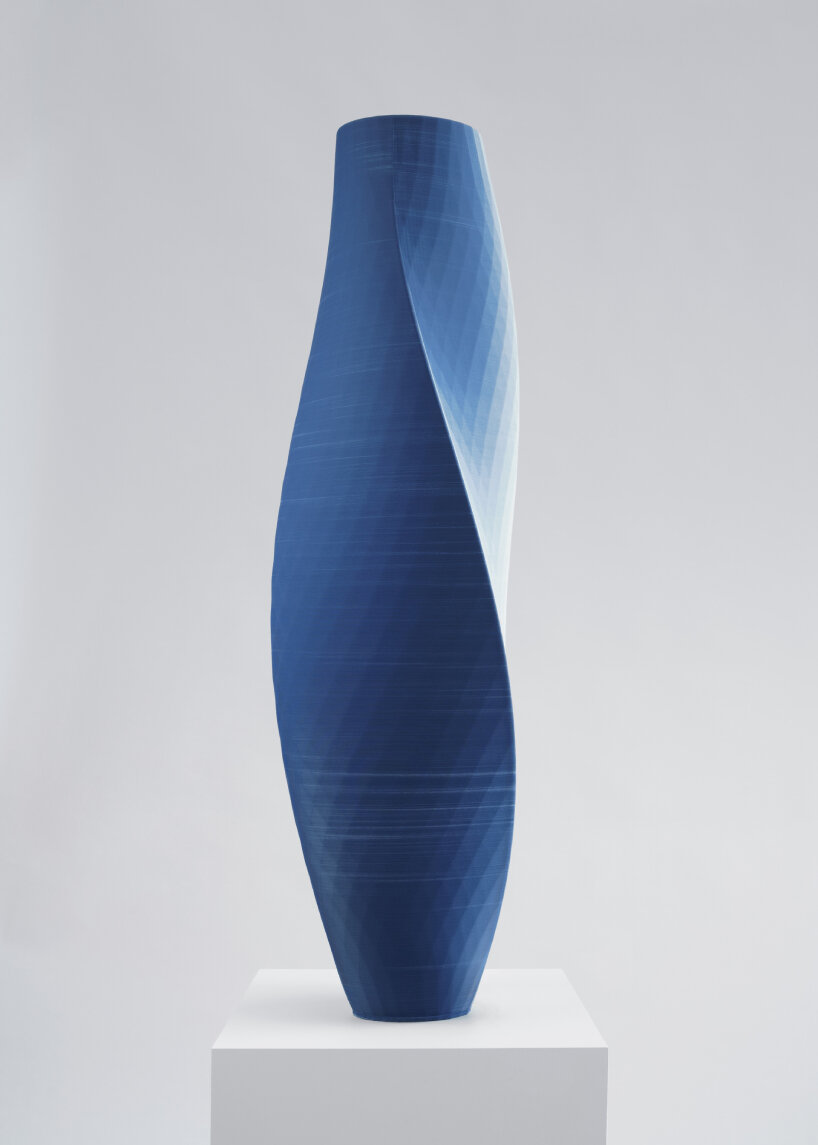
all images courtesy of Olivier van Herpt
3D printed porcelain vases at Kunstmuseum Den Haag
Dunes is a resulting example of Olivier van Herpt’s new formula and technique. It’s a series of 3D printed large-scale, blue-and-white porcelain vases, and the Kunstmuseum Den Haag recently acquired a pair of them as part of its permanent collection. These are painted straight out of the kiln after firing. They didn’t collapse, and there are no cracks visible on the inside or outside. They look appealing to the eye, concealing the weeks it took the Dutch designer to perfect the technique.
Olivier van Herpt says he had to repeat the process of firing a single 3D printed porcelain vase 26 times before he was able to achieve its form, one without any damage, cracks, or deformations. During this phase, the real pure white clay he was using shrank by 30 centimeters. This was typical since this type of clay, he says, has the highest shrinkage of all clays and is usually used in small-scale objects.
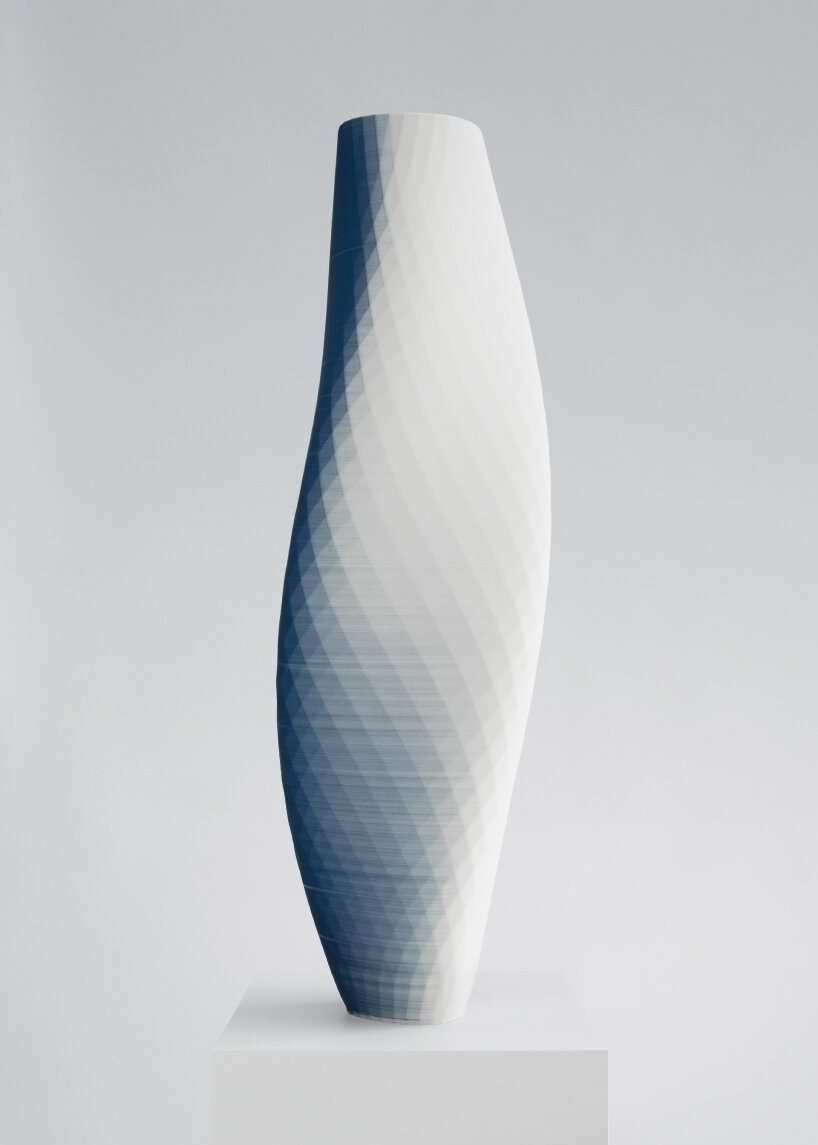
Dunes, 2024, porcelain, 110 x 30 x 30 cm (43.3 x 11.8 x 11.8 in)
Avoiding cracks and collapses during firing and drying
To solve this, Olivier van Herpt digitally controlled the drying chambers. He also 3D printed thin, fired-clay reusable saggars, or containers that protect the porcelain in the kiln. In this way, the controlled heat spread out evenly around the large-scale porcelain vase due to the saggars, allowing for uniform firing and preventing cracks or shrinkage in the end. The Dutch designer says that porcelain softens in the kiln, unlike other clays. Because of its weight, the material collapses during firing when shaped as a large object.
He adds that some may mix porcelain with materials that melt less to keep the structure upright, but this reduces the ‘purity’ of the white porcelain. Others may also stick to a more balanced and stable design to prevent the material from breaking down. By digitally controlling the drying chamber, developing his own 3D printer catered to this new technique, and using only pure white porcelain, Olivier van Herpt may have cracked the code in producing light, 3D printed porcelain vases and objects with intricate forms and without cracks or damage.
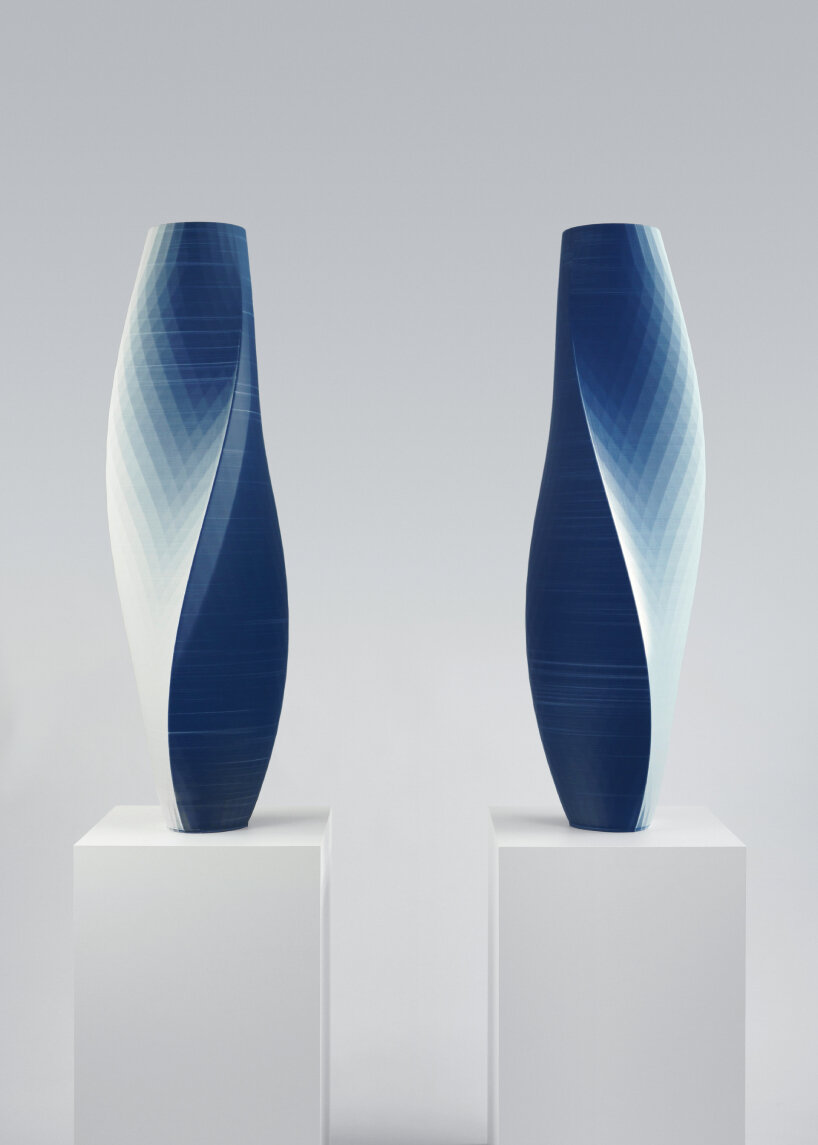
the Kunstmuseum Den Haag recently acquired a pair of Dunes as part of its permanent collection
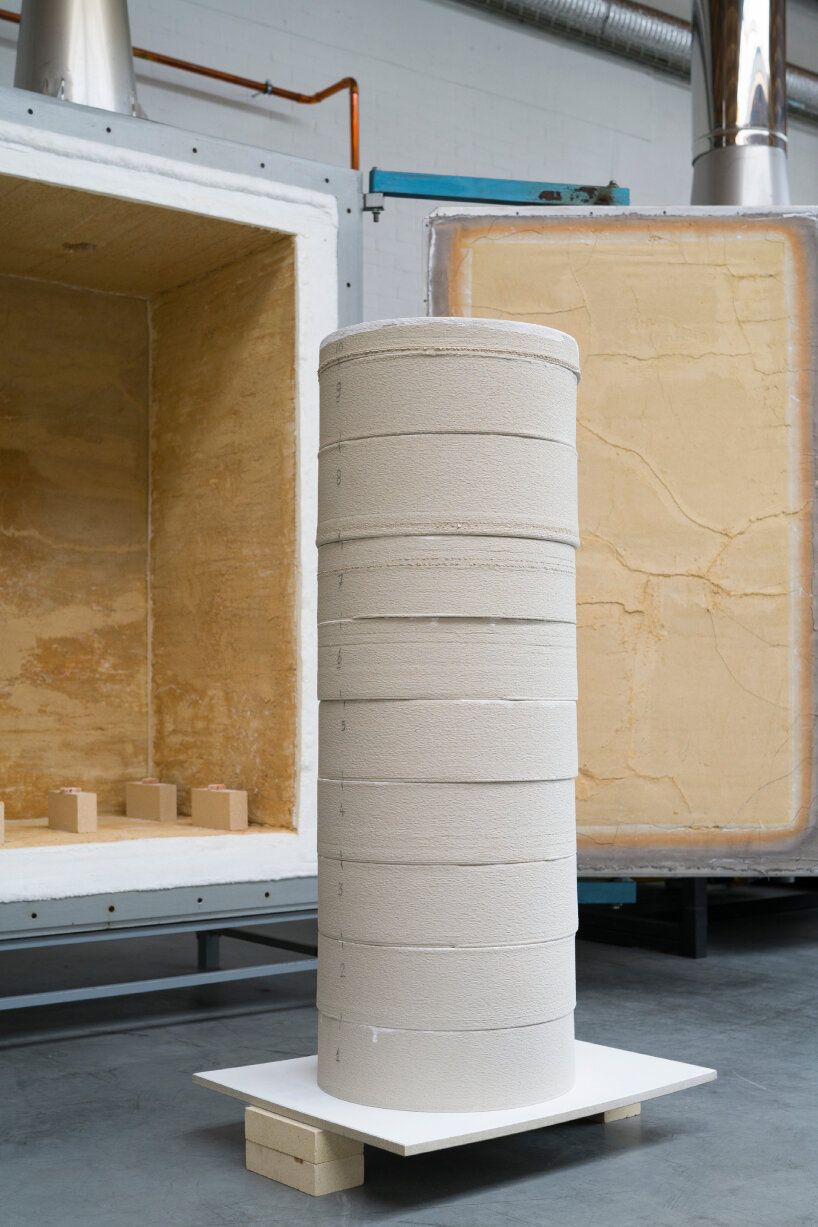
lightweight 3D printed saggars surrounding the piece before being loaded into the kiln
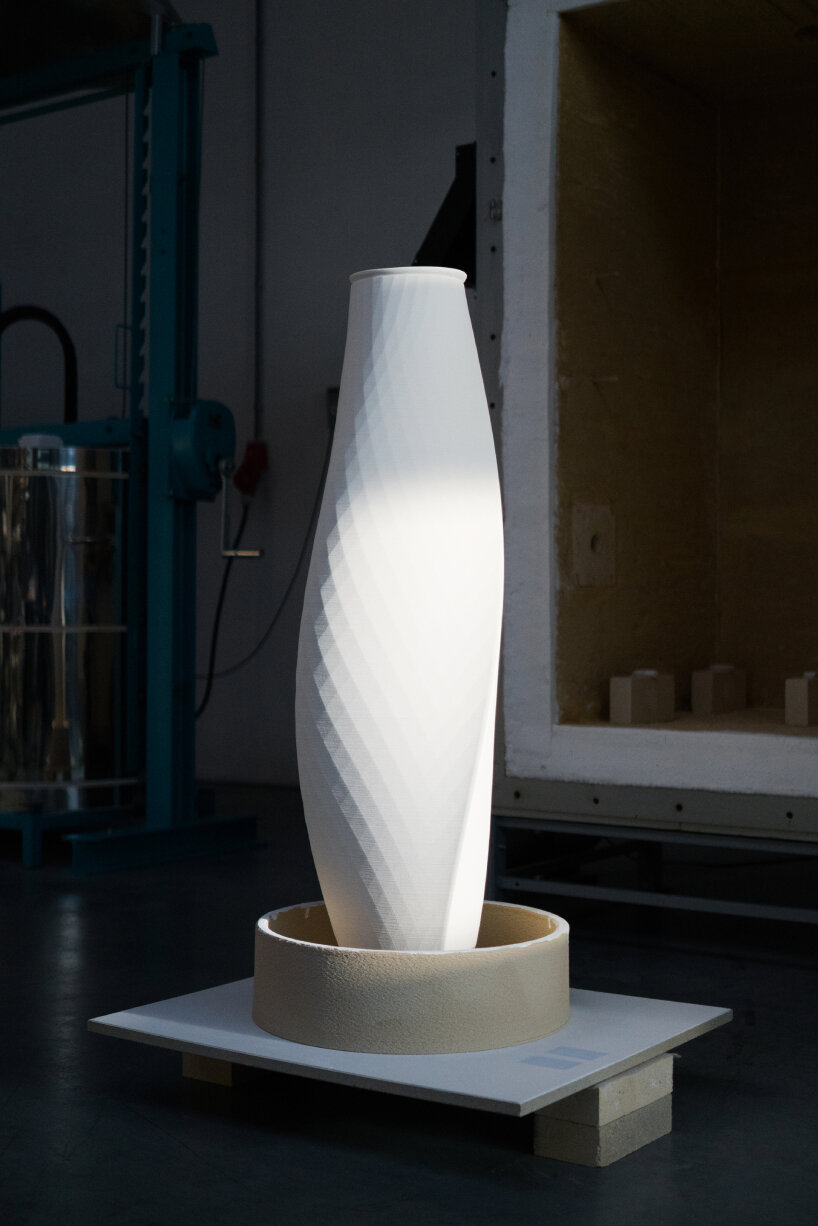
after the firing process, the unveiling of the large fired porcelain piece from within the saggars
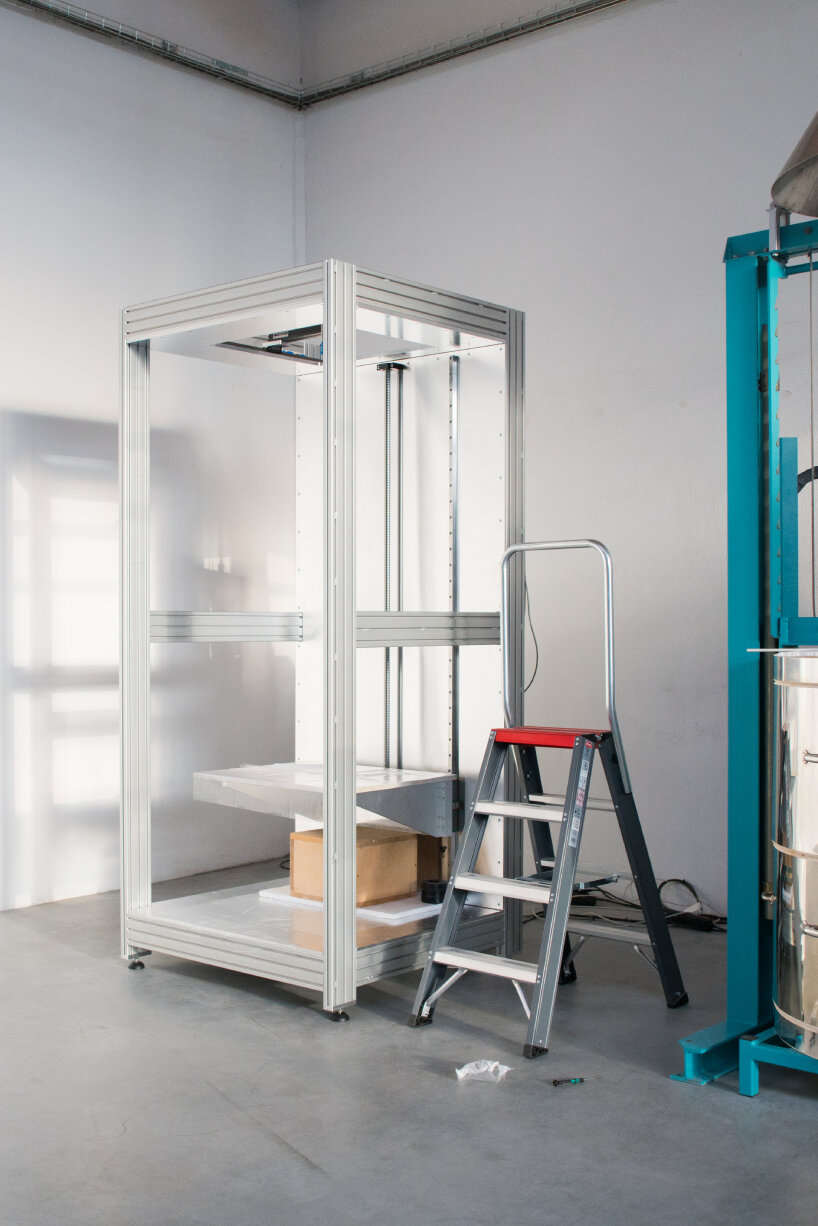
building the new 3D printer designed for forming large-scale, ultra-thin clay pieces
